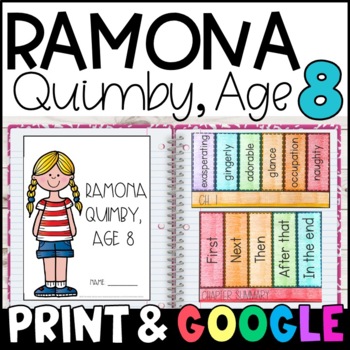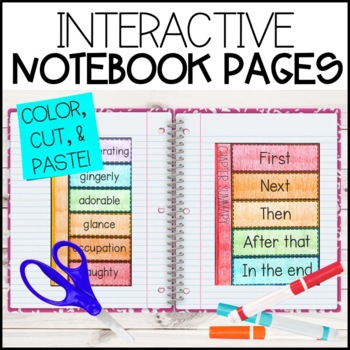Ramona Quimby, Age 8 by Beverly Cleary Novel Study with GOOGLE Slides
- PDF
- Google Apps™

What educators are saying
Also included in
- Are you struggling to find rigorous and engaging novel studies that align with Beverly Cleary's Ramona Quimby books? This complete set of no-prep book studies is just what you are looking for! Each book study has chapter-specific comprehension questions and reading response activities, chapter-by-cPrice $34.00Original Price $40.00Save $6.00
Description
Are your students reading Ramona Quimby Age 8 by Beverly Cleary? This no-prep novel study guides your students through each chapter of the book with standards-aligned questions and reading response activities. Students will work with story vocabulary as the comprehension questions help check for understanding. Students will need a copy of the book, as they are required to support their thinking with text evidence.
Easy to implement!
This Ramona unit engages students as they work independently, in literature circles, and in guided reading groups. Students are kept accountable for their reading with the chapter-by-chapter reading responses and vocabulary matching.
Included in the download:
- teacher directions
- Common Core alignment guide
- link to Google Slides
- strategy charts for making connections, predicting, and asking questions
- vocabulary words for every chapter
- interactive notebook pages
- complete answer keys
With this Ramona novel study, students will:
- make connections
- ask questions
- make predictions
- answer text-dependent questions
- find evidence to support their thinking
- determine character traits
- write chapter summaries
- draw visualizations
- determine the main problem and solution
- write a book recommendation
Options for the teacher:
This book study is offered as a no-prep printable unit and has also been prepared using Google Slides. The link to the Slides is found on page 2 of the PDF.
See what teachers are saying!
❤️ "I needed a resource to streamline my students' book clubs and also something that will hold them accountable to their reading. This is that!! I love that each chapter has vocabulary and a different comprehension strategy. It goes so much deeper than just answering questions." Lindsey E.
❤️ "Such a fun, hands-on resource for my lit circle group. The questions were well thought out, and everything was organized very well." Tiffany N.
❤️ "My students were completely engaged in the story and with the group discussions we had around the questions and connections page! I plan to use this again in the future for small group instruction." LivingtheDreaminPA
Related Book Studies
⭐ Ramona Quimby BUNDLE: Reading Responses for ALL 8 BOOKS! • GOOGLE
⭐ Sarah, Plain and Tall Novel Study • GOOGLE






